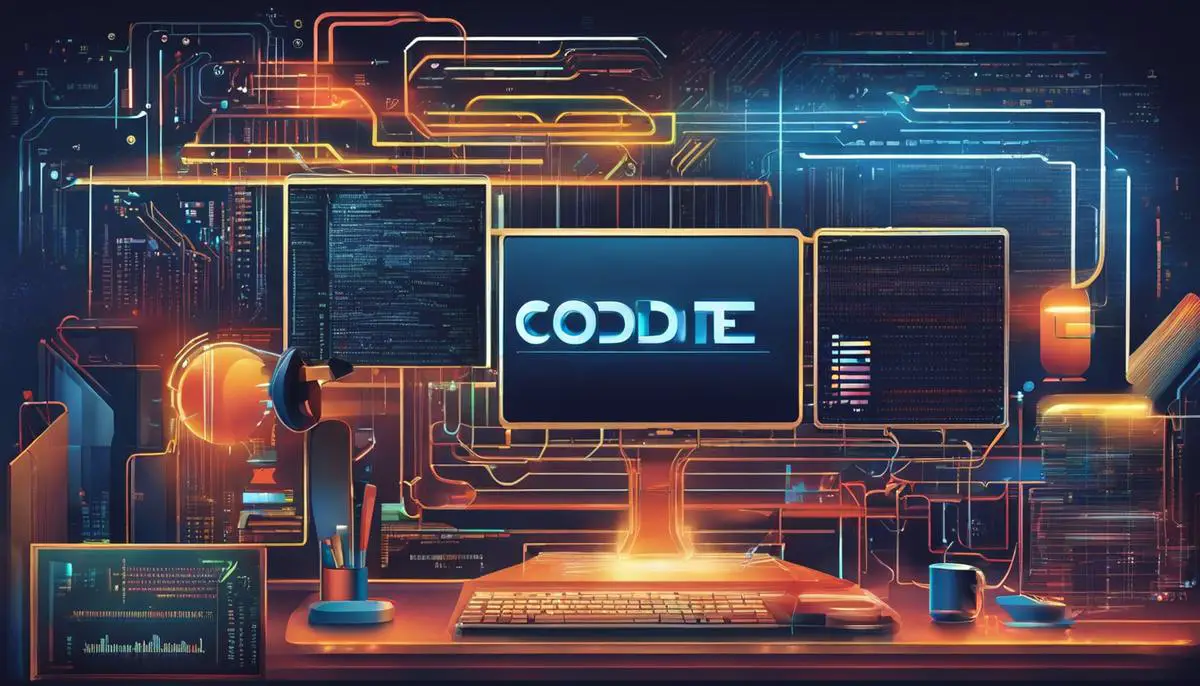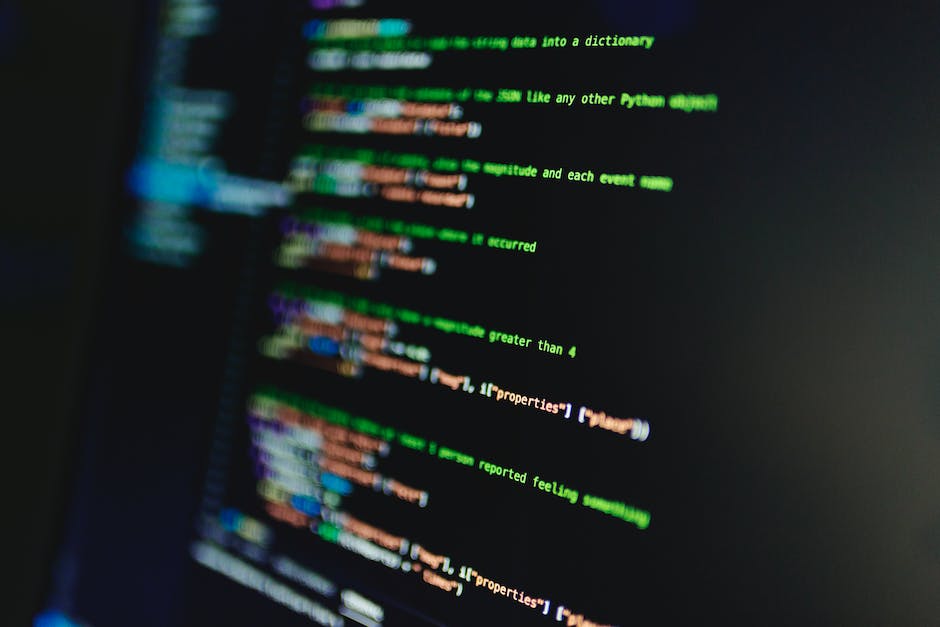In the ever-evolving realm of technology, two facets that continue to hold sway are code translation and artificial intelligence. A deep understanding of code translation’s relevance and applications has a profound impact on numerous platforms and programming languages. At the same time, advancements in artificial intelligence are transforming our world, heavily influencing numerous technological aspects, including code translation. This intersection between AI and code translation is revolutionizing programming practices, simplifying cross-platform development, and offering intriguing possibilities for the future. We will explore this fascinating subject, providing insights into the benefits, limitations, and predictions for how AI can shape the landscape of code translation.
Understanding Code Translation
Dissecting Code Translation: A Keystone in the Age of Artificial Intelligence
Code translation, often known as source code translation or program transformation, stands as a stellar yet less heralded facet in the multifarious universe of Artificial Intelligence (AI). Considered the lifeblood of software refurbishment, code translation offers an insightful window into the intriguing future of AI and its commercial and societal implications.
The essence of code translation lies in transforming an existing codebase into another language without altering the original program’s functionality. This translation from a source language to a target language is not mere transposition but a comprehensive revamp, deep from within the code’s structure and logic.
The precursors of AI — machine learning, deep learning and neural networks — may provide the glitz, glamour, and hype of modern technology. However, code translation remains an unsung hero. An advanced AI system, replete with complex algorithms and sophisticated neural networks, relies on code translation to optimize performance and efficiency.
As the AI revolution gains impetus, the need for diverse programming languages is growing. Different languages, each with their unique intricacies and capabilities, serve various purposes in the AI arena. Python and R, for instance, are predominantly used for statistical analysis and data modeling, while Lisp and Prolog are preferred for AI and machine learning applications. This burgeoning multiplicity reinforces the role of robust code translation for seamless integration across multiple programming constructs.
Code translation’s significance ascends another level in legacy modernization. In an era where technology moves at a feverish pace, maintaining older systems becomes labor-intensive and cost-prohibitive. Transforming legacy code into compatible, modern programming languages via code translation can substantially reduce operational overhead.
Further, code translation helps democratize AI. Don’t mistake this as an overstatement — think about it. AI’s power lies in its global reach, its ability to transcend physical, geographical, and even language boundaries. Translating code into universally comprehensible languages empowers a wider spectrum of developers, researchers, and industries to participate in the future of technology.
Finally, security stands as another cornerstone where code translation plays an indomitable role. With the ever-looming threats of cyber attacks and data breaches, transforming code and altering its structure can act as a potent security measure. When impervious to manual scrutiny, these transformations can significantly deter code vulnerabilities.
So, when pondering about the intricate concoction of technologies that construct our AI-centric future, it’s worth giving due credit to that elemental process — code translation. It’s not just about changing the language; it’s about rewriting the rules of the game, making AI more efficient, diverse, inclusive, and secure.
Call it an unsung hero, a solid foundation, or an invisible hand — code translation is a key enabler in the unfolding AI world. And that, undeniably, holds monumental significance.

Artificial Intelligence and Emerging Technology
Artificial Intelligence and Code Translation: Paving the Path for a Revolutionized Tech Landscape
Building upon the underpinnings of code translation in the realm of artificial intelligence, it is essential to mull over its profound influence on the metamorphosis of technology, notably in terms of optimization, versatile coding, legacy modernization, democratization, and cybersecurity. Delving deeper into one facet acts as a catalyst for apprehending the broader implications of this formidable intersection.
Understanding this technological intersection yields insights into how code translation fuels the optimization of AI systems. This is primarily achieved through the conversion of higher-level languages into machine code, expediting processing speeds and allocating resources efficiently. This represents a significant power reshaping the AI landscape, enabling these systems to integrate seamlessly into our daily lives.
The vibrancy of coding languages within the AI sphere is, in part, attributable to code translation. This versatility – from Python to Java to C++ – breathes life into AI, allowing it to adapt and evolve across myriad platforms and applications. Code translation equips these languages with the capacity to engage in meaningful, performative dialogue with one another, cultivating an environment of adaptability and progression.
Legacy modernization, an indispensable domain within technology, heavily relies on code translation. Seamlessly translating older, often obsolete, systems into the contemporary language of technology is vital for sustainability and efficiency. In AI, specifically, it foments the transformation of traditionally static systems into dynamic, learning entities.
The democratization of AI is another forward-thinking application of code translation. By breaking down barriers between varying programming languages, AI becomes an inclusive, participatory sphere. In essence, code translation is bridging gaps, fostering diversity, and engendering a level playing field within technology.
Code translation exerts a substantial influence on the realm of cybersecurity within AI. As comforting as it is, in the era of information, where data breaches are increasingly commonplace, it acts as a guardian. By translating source codes into machine-readable formats, it conceals integral pathways from potential threats, fortifying AI against cyber-attacks.
In conclusion, gauging the formidable role code translation plays in the AI arena explicates the magnitude of this intersection. It’s more than a mere bridge between languages; it’s a significant cog in the wheel of AI, driving improvements in speed and efficiency, cultivating diversity, rejuvenating antiquated systems that need a modern touch, broadening the gates to participation, and heightening security measures. The influence exerted by code translation is thus vast and undeniable, illustrating how it facilitates a significant reshaping of the technological landscape.

Benefits and Limitations of AI in Code Translation
The advantages of utilizing Artificial Intelligence (AI) for code translation are manifold. This innovative tool has the potential to revolutionize various spheres; however, equally, it brings its own set of challenges.
A significant advantage of AI code translation is its ability to speed up the development process. Writing and testing code is a complex and time-consuming task. AI can automate aspects of these tasks, significantly cutting time and cost in the development process, enhancing productivity, and allowing developers to focus on the more creative components of their work.
Moreover, there is a substantial positive impact on the universalization of programming. Just as AI has the capacity to translate between spoken and written languages, it can do so between coding languages, allowing a larger pool of technicians to contribute to a project, crossing barriers of varying proficiency levels in different coding languages. In this sense, AI code translation fosters collaboration and innovation.
AI code translation also offers an opportunity to rejuvenate outdated or Legacy code. Through AI, this older code can be modernized to fit into current programming standards, revamping without completely replacing. This can facilitate easier maintenance, bug fixing, and can enable the application to be compatible with newer technology stacks.
The flip side of AI’s use in code translation must also be understood. A major concern is the dependence on AI, which could make the field of programming homogenous, eradicating the need for programmers proficient in diverse languages. This can lead to loss of different perspectives in problem-solving, thereby affecting innovation.
Another potential downside is the risk of error propagation. AI’s automated translation can inadvertently incorporate the same error throughout the translated code, leading to catastrophic errors.
Data security is another concern with AI Code Translation. The complex nature of AI algorithms makes it tricky to fully understand how data is processed, posing a potential threat to user data privacy and security.
Finally, there is the question of interpreting “intent” behind the written code, which human programmers understand based on context. While AI is improving in this aspect, there is still much development required.
In sum, the boon of AI in code translation is palpable, broadening the horizons of what can be achieved. Nevertheless, with these significant advancements come equally significant challenges. Embracing these advancements must be balanced with continuous examination of potential pitfalls to best leverage the potential that AI provides to the domain of code translation.

Photo by clemhlrdt on Unsplash
Future Trends and Predictions
Building on the critical role of code translation in Artificial Intelligence (AI), the relentless pursuit is directed towards unlocking the full potential of this incredible resource.
As the scientific and technological community continue to advance in AI, they are eagerly looking into the prospects that beckon in the realm of code translation. The possibilities are endless, as the next decade will reveal.
One promising area in employing AI in code translation is accelerating the development process. Given the sheer volume of code to be written, AI can increasingly take on a proportion of this workload. As a result, the productivity of developers could be heightened enormously, reducing human labor and streamlining processes. However, it’s not all about speed; it’s also about quality. AI-backed code translation can deliver impeccably translated code which would significantly reduce debugging, hence saving considerable time for developers.
Furthermore, the application of AI in code translation could instigate a universal standardization of programming languages — a longtime ideal of the technology industry. Inevitably, such a breakthrough would abolish the barriers currently experienced due to language differentiation and would encourage the smooth and harmonious interaction within diverse development environments.
The revitalization of outdated or Legacy code is another promising prospect that arises with AI in code translation. AI’s versatility can offer flexibility for older systems, giving them a new lease of life and making them compatible with advanced technologies. This capacity of AI can save immense resources, which would otherwise be spent on integrating outdated systems.
However, these advancements do not come without their implications. As is the case with all breakthroughs, the dependence on AI also raises concerns about the risk of diminishing diverse perspectives and innovation. It’s inherently vital to not allow AI to monopolize the field, but rather to remain as a tool to aid and enhance human capabilities.
Moreover, code translation by AI also carries the risk of error propagation, causing potentially severe and far-reaching damage. Rigorous testing and validation are essential to mitigate these risks — an area where AI can once again prove its worthiness through advanced quality assurance processes.
In terms of data security, representations of code in AI pose a risk of potential breaches and unauthorized entry. Consequently, while advancements occur in AI code translation, parallel developments in cybersecurity are indispensable.
Perhaps the most fascinating, yet intimidating challenge lies in interpreting the “intent” behind written code. Given that coding is not merely a language, but a reflection of an idea, an intention – how can AI interpret that? It’s more than just semantics; it’s about understanding the human thought process. This is where we need to be cautious about building a productive synergy between AI and human intelligence.
Conclusively, the field of AI in code translation is teeming with opportunities and challenges. Moving forward, the task is to balance the advancements with potential pitfalls. It marks the beginning of a remarkable journey — a journey where human intelligence and artificial intelligence combine to test the boundaries of innovation and technology.

The continuous advancements in artificial intelligence and its integration into code translation represents an exciting frontier in technology. With undeniable benefits such as increased efficiency and accuracy, it is already having a transformative impact. However, it’s critical to keep in mind the limitations and challenges, including dealing with idiomatic expressions and training data dependency. As we look forward to a future marked by further advancements, the exploration of AI in the context of code translation becomes indispensable. The coming decades will undoubtedly be a testing ground for new innovations and could redefine our understanding of programming and cross-platform development.
